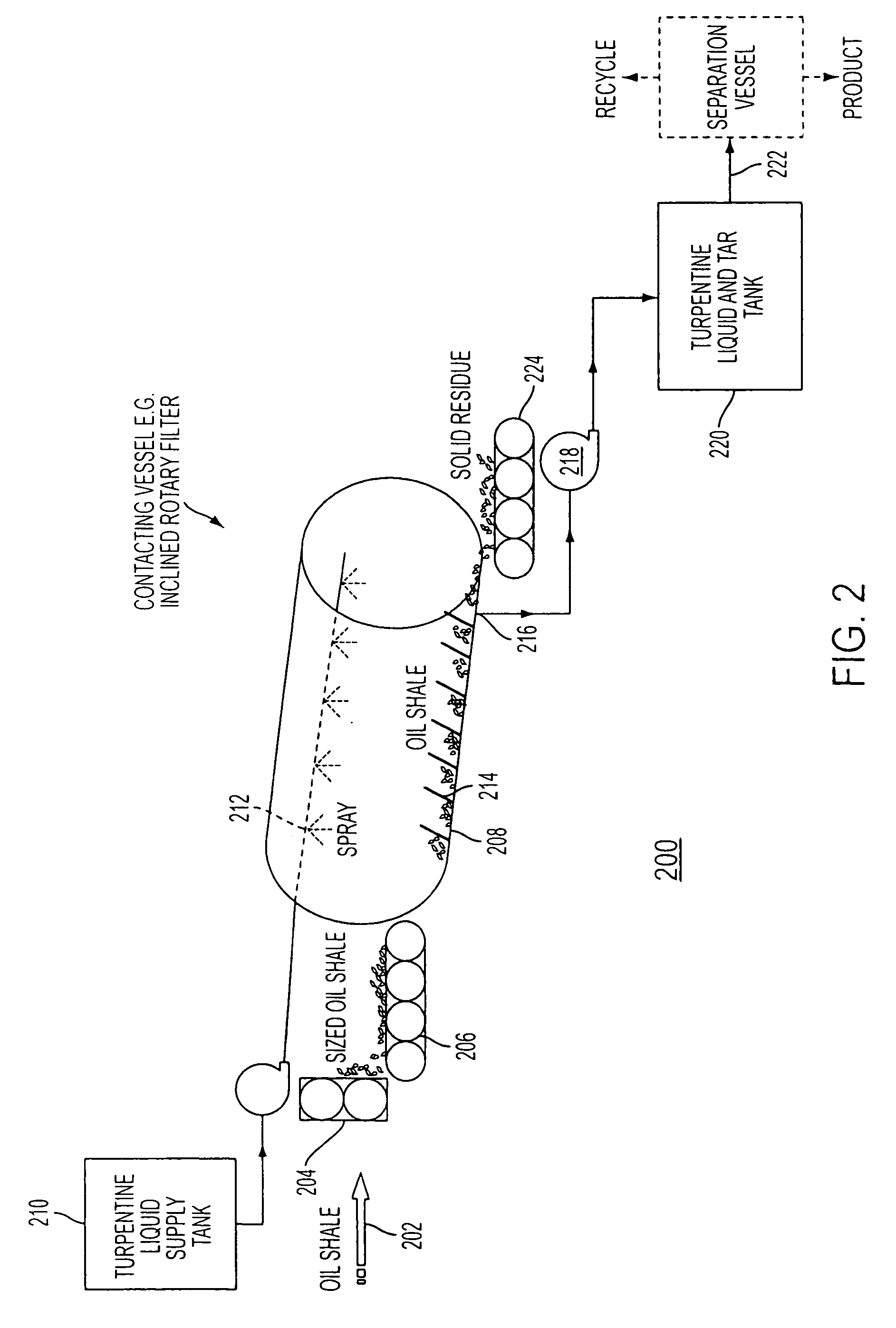Extraction of hydrocarbons from hydrocarbon-containing materials
a hydrocarbon and hydrocarbon-containing technology, applied in the direction of liquid displacement, other chemical processes, wellbore/well accessories, etc., can solve the problems of liquefaction, solubilization and/or extraction of fossil fuels, also called hydrocarbon-containing organic matter, in solid, semi-solid, highly viscous, and prove to be extremely challenging and difficult, and none of the prior art liquefaction, solubilization and extraction technologies or processes, have proven to be commercially viabl
- Summary
- Abstract
- Description
- Claims
- Application Information
AI Technical Summary
Benefits of technology
Problems solved by technology
Method used
Image
Examples
example 1
[0092]In this example, coal from the Pittsburgh seam in Washington County, Pennsylvania was liquefied with reagent α-terpineol. The coal sample was obtained from the Coal Bank at Pennsylvania State University, which provided the following proximate analyses for it; 2.00 wt. % of as-received moisture, 9.25 wt. % of dry ash, 38.63 wt. % of dry volatile matter, and 50.12 wt. % of dry fixed carbon. The particle size of coal sample was about 60 mesh. About 60 grams of α-terpineol was gently added to about 30 grams of the coal sample placed in an extraction vessel, thus giving rise to the reagent-to-sample ratio of 2 to 1. The capped, but not tightly sealed, extraction vessel containing the resultant mixture of α-terpineol and coal was maintained at the constant temperature of about 96° C. and continually agitated. Without boiling the α-terpineol, the pressure in the extraction vessel remained at the ambient pressure of slightly less than about 1.01×105 Pascals (1 atm). After about 30 min...
example 2
[0093]This Example is identical to Example 1 in all aspects except two. After maintaining the temperature at about 96° C., for about 30 minutes, as done in Example 1, the extraction vessel containing the coal sample and α-terpineol was maintained at a temperature at about 135° C. for an additional period of about 30 minutes. The pressure in the extraction vessel remained at the ambient pressure of slightly less than about 1.01×105 Pascals (1 atm). The conversion, i.e., the degree of liquefaction, of the coal sample was determined to be about 70 wt. %.
example 3
[0094]The coal sample used was from the same source with the same proximate analyses as those used in the preceding two examples. About 31 grams of α-terpineol were added to about 31 grams of the coal sample in an extraction vessel. The mixture was maintained at about 96° C. and an ambient pressure of slightly less than about 1.01×105 Pascals (1 atm) for about 30 minutes. The conversion, i.e., the degree of liquefaction, of the coal sample attained was determined to be about 71 wt. % by weighing the sample after filtering, washing, and drying as done in the preceding two examples.
PUM
| Property | Measurement | Unit |
|---|---|---|
| particle diameter | aaaaa | aaaaa |
| temperature | aaaaa | aaaaa |
| pressure | aaaaa | aaaaa |
Abstract
Description
Claims
Application Information
 Login to View More
Login to View More - R&D
- Intellectual Property
- Life Sciences
- Materials
- Tech Scout
- Unparalleled Data Quality
- Higher Quality Content
- 60% Fewer Hallucinations
Browse by: Latest US Patents, China's latest patents, Technical Efficacy Thesaurus, Application Domain, Technology Topic, Popular Technical Reports.
© 2025 PatSnap. All rights reserved.Legal|Privacy policy|Modern Slavery Act Transparency Statement|Sitemap|About US| Contact US: help@patsnap.com



